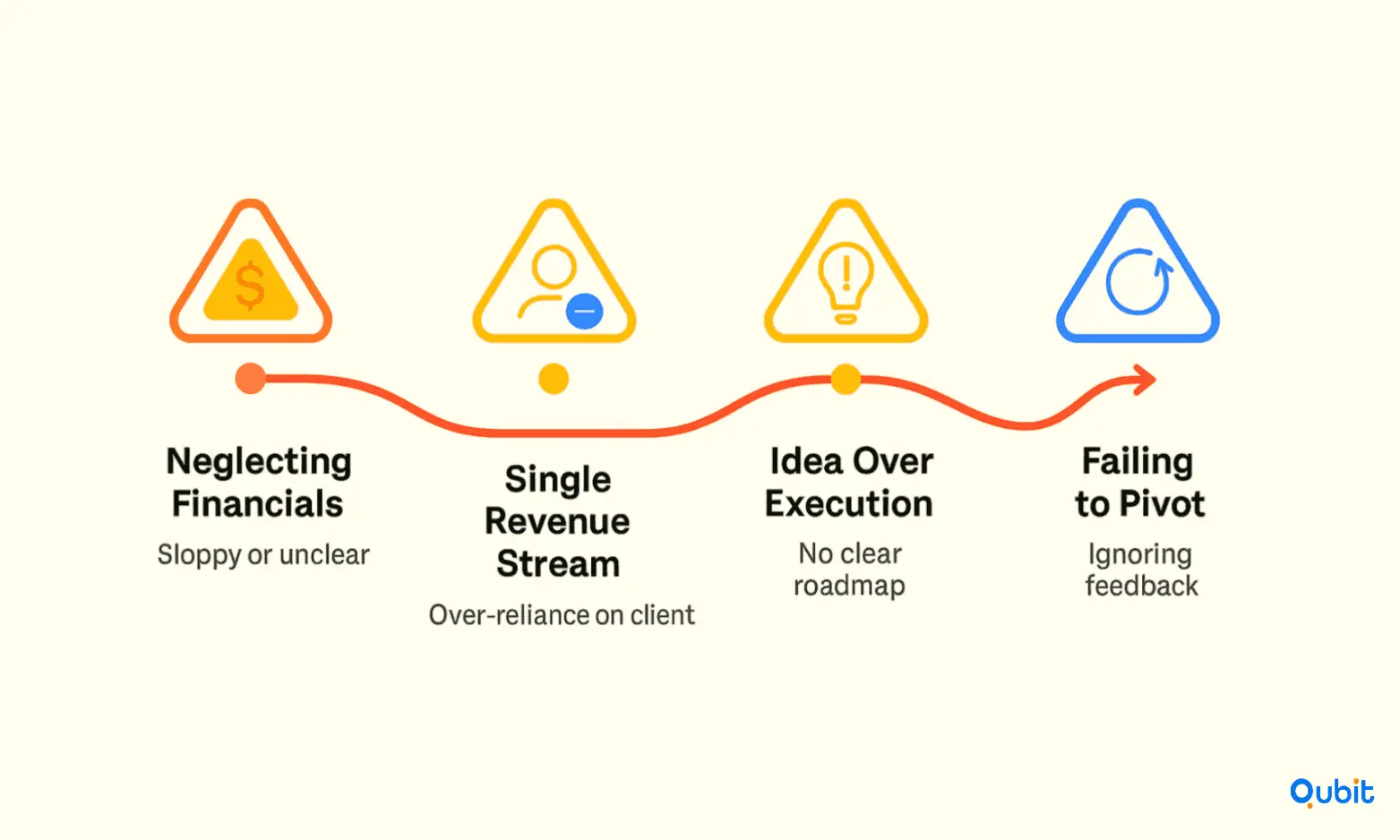Securing funding is a pivotal milestone for EdTech startups, yet many founders stumble over common pitfalls that can derail their efforts. From misjudging investor expectations to overlooking the importance of a compelling narrative, these mistakes can hinder progress and waste valuable time.
Your understanding deepens with how to raise funds for edtech startups, as the broader context offers a comprehensive view of the opportunities and challenges inherent in EdTech fundraising. By addressing these missteps early, founders can position their startups for success in a competitive market.
Avoiding Common EdTech Fundraising Mistakes and Operational Pitfalls
EdTech startups often find themselves navigating a complex maze of challenges, from securing funding to ensuring operational efficiency. The stakes are high, especially as the sector faces declining venture capital investments and increasing competition. HolonIQ reported that EdTech venture funding in Q1 2024 hit a 10-year low at $580 million, the lowest since 2014, despite the growing interest in AI-based solutions. This stark reality underscores the need for startups to adopt a disciplined approach to avoid common pitfalls.
Missteps in Fundraising: Product-Market Fit and Investor Expectations
One of the most significant fundraising mistakes EdTech startups make is scaling prematurely without validating product-market fit (PMF). Graham Forman, an industry expert, advises startups to focus on building a small cohort of about six delighted customers before pursuing aggressive growth. This strategy ensures that the product resonates with its target audience and reduces the risk of scaling a solution that lacks demand.
Additionally, while overall funding has decreased, the average seed deal size rose to $7.8 million in Q1 2025, reflecting a shift in investor behavior. Investors are now more selective, favoring startups with robust business models and clear growth potential. This trend highlights the importance of presenting a well-researched and scalable business plan during fundraising efforts.
Exploring additional resources can provide a deeper understanding of EdTech fundraising dynamics. For instance, insights into blended finance edtech partnerships reveal innovative funding models that utilize collaborative financial structures. This approach complements the analysis by offering a nuanced perspective on public-private partnerships (PPPs) and their role in scaling EdTech solutions. Readers can delve further into this topic by accessing the dedicated cluster for a comprehensive breakdown of PPP strategies.
Operational Oversights: Infrastructure and Compliance
Operational inefficiencies can derail even the most promising EdTech ventures. The failure of the One Laptop per Child (OLPC) initiative serves as a cautionary tale. Despite its noble goal of providing low-cost laptops to children in developing countries, the project faced technical and logistical challenges that ultimately led to its discontinuation. The lack of scalable infrastructure and a failure to address real user needs were key contributors to its downfall.
Startups must also prioritize regulatory compliance, as the education sector is heavily regulated. Ignoring these requirements can result in costly legal issues and reputational damage.
3. Adapting to Market Shifts: The Role of AI
The rise of AI-based solutions is reshaping the EdTech landscape, creating both opportunities and challenges. Startups must invest in scalable technology and customer-centric design to stay competitive. This requires not only technical expertise but also a deep understanding of user needs and market trends.
For a deeper dive into funding strategies, explore our article on the best edtech investors 2025, which provides insights into targeted financial backers and their expectations.
Common Mistake To Avoid While Fundraising for Edtech

Neglecting Financials and Professionalism
Investors expect founders to present clear, accurate, and professional financials. Sloppy accounting, lack of financial projections, or deviation from standard practices signals inexperience and risk.
How to avoid:
- Use accepted accounting principles and standard fundraising documents (e.g., SAFEs, convertible notes).
- Prepare detailed financial models and forecasts.
- Seek professional advice to ensure your legal and financial setup is clean.
Another valuable resource focuses on the legal aspects of edtech startup fundraising, addressing critical regulatory considerations that influence financial strategies. Compliance is a cornerstone of successful fundraising, and this resource provides a thorough legal overview to ensure startups navigate these complexities effectively.
Overreliance on a Single Customer or Revenue Stream
Designing your product or business model around one anchor client creates a false sense of security and limits growth potential. Investors look for evidence that your solution addresses a broad market need.
How to avoid:
- Diversify your customer base early.
- Demonstrate traction across multiple segments or regions.
- Avoid over-customizing your product for one client.
Overemphasizing the Idea, Underestimating Execution
Many founders believe a groundbreaking idea is enough to attract capital. In reality, investors prioritize execution: a strong team, a clear operational roadmap, and evidence of your ability to deliver results. Without a robust plan for scaling, monetizing, and sustaining your solution, even the best ideas will struggle to secure backing.
How to avoid:
- Build a team with proven operational expertise.
- Develop a detailed go-to-market and execution strategy.
- Demonstrate early traction and clear milestones.
Failing to Adapt and Pivot
The EdTech landscape evolves rapidly. Startups that ignore feedback or resist change risk obsolescence.
How to avoid:
- Stay close to users and market trends.
- Be willing to iterate or pivot based on data.
- Embrace learning from failure as part of growth.
Conclusion
Overcoming the challenges of EdTech fundraising requires a thoughtful approach and a commitment to best practices. Throughout this discussion, we’ve highlighted the importance of disciplined research, user-centric design, and strict adherence to regulatory compliance as key strategies to avoid common pitfalls. These elements not only enhance your credibility but also position your startup for sustainable growth.
Equally vital is crafting a clear, narrative-driven strategy that resonates with investors. By presenting a compelling story backed by data, you can effectively communicate your vision and the value your solution brings to the education sector. Seeking expert support can further refine your approach, ensuring you’re equipped to meet the demands of a competitive funding landscape.
If you’re translating learning evidence, privacy compliance, and district procurement into an investable case, we align the narrative, numbers, and risk. Proceed with our edtech fundraising assistance. Talk to a specialist this week.
Key Takeaways
- EdTech fundraising mistakes often arise from both operational oversights and market misalignment.
- Securing the right mix of funding and scaling only after achieving product-market fit is essential.
- Robust testing, stringent data security, and regulatory compliance significantly boost investor confidence.
- Incorporating consistent user feedback helps refine product quality and align with market needs.
Frequently asked Questions
What are the biggest mistakes in edtech fundraising?
The biggest mistakes include inadequate market validation, neglecting regulatory compliance, premature scaling without user validation, and insufficient focus on data security and quality assurance.






